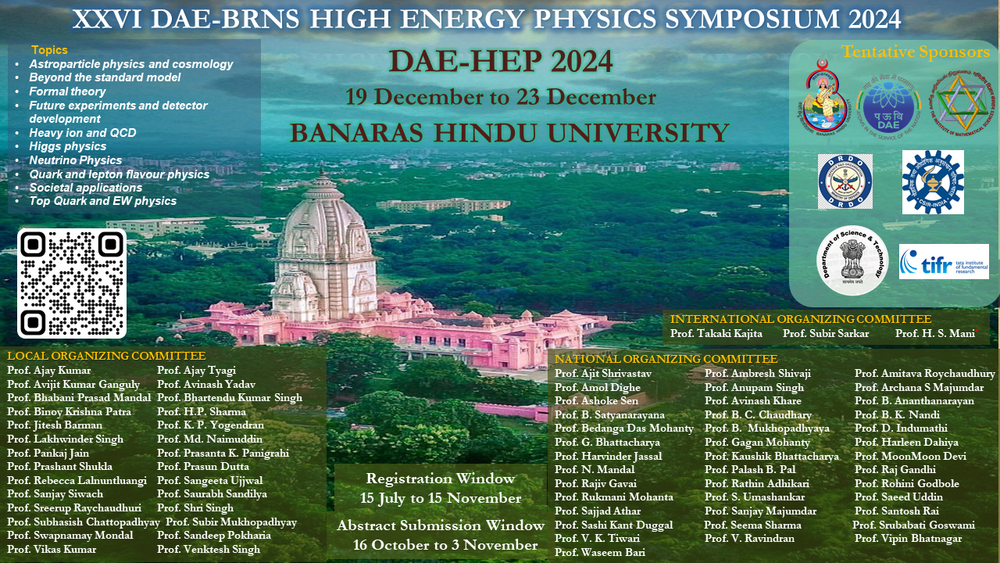Speaker
Description
For decades supersymmetric matrix models of $SU(N)$ gauge theories has been a subject of particular interest. We consider a matrix model of $SU(2)$ gauge theory coupled with a Weyl fermion transforming in the adjoint representation of the gauge group. This model depicts $\mathcal{N}=1$ SUSY with anomalous global $U(1)_R$ symmetry. The matrix model, being quantum mechanical, provides a simplified computational platform to study the properties of the system in both weak and strong coupling regimes ($g$ is the dimensionless Yang-Mills coupling constant). Here, we use a Rayleigh-Ritz variational technique to diagonalize the Hamiltonian and construct the color-singlet spin-0 and spin-1/2 energy eigenstates. In the weak coupling regime ($0<g<1$), we show that the ground state is a unique spin-0 state. We find that there is a level crossing in the ground state at $g=g_c \approx 0.225 $. Such a level crossing in the ground state is a signature of a quantum phase transition (QPT). Except near $g_c$, the ground state is always a SUSY-singlet. Also, in both phases away from the critical coupling $g_c$, the low-lying spin-1/2 doublets are degenerate with two spin-0 states. Such manifolds of degenerate states constitutes the $\mathcal{N}=1$ supermultiplets and in both phases at weak coupling the Witten index is $W=1$. In the vicinity of the QPT, the rearrangement of the states breaks supersymmetry: the ground state is unique but not a SUSY-singlet and the excited spin-0 states are not paired with superpartners.
In the extreme strong coupling regime (i.e. $g=\infty$), the classical potential has flat directions and the spectrum of the quantum Hamiltonian is expected to be continuous. In our numerical work with finite bosonic cut-off $N_{max}$ in the varitational ansatz, we find that the energy eigenvalues at $g=\infty$ has power-law dependence on $N_{max}$. This is a signature of the emerging continuous spectrum.
For $1\ll g<\infty$, the numerical error due to the finite cut-off shows a power-law behavior on $N_{max}$ and in this case, the spectrum remains discrete. However, here the degeneracy between the superpartners is lifted. This corresponds to a crossover from the supersymmetric weak coupling phase to a SUSY-broken strong coupling phase (with possibility of SUSY being restored only at $g=\infty$).
| Field of contribution | Theory |
|---|

